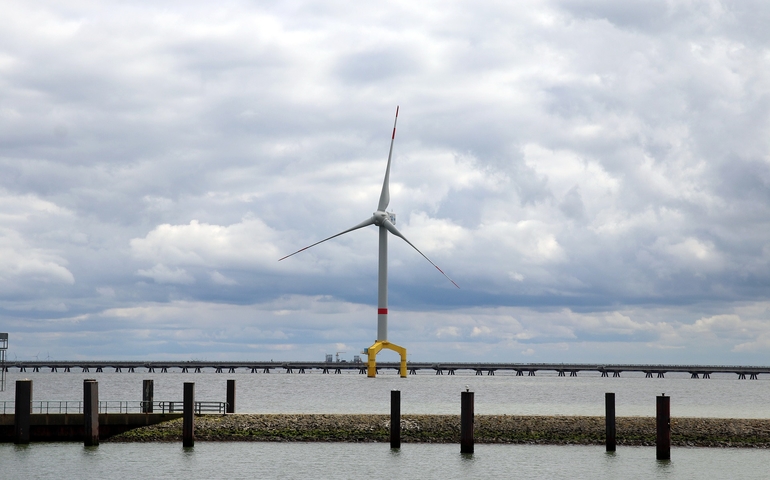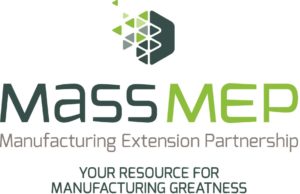With two major offshore wind projects coming to Connecticut, economic development and other officials say they see an opening for in-state manufacturers to start producing for the growing wind industry.
The 704-megawatt Revolution Wind project in New London — a joint development of Denmark-based Ørsted and Eversource — and the 804-megawatt Park City Wind development in Bridgeport — led by Vineyard Wind — will be Connecticut’s first forays into the offshore wind industry.
Both projects are currently in the government-approval process, but the companies spearheading them are already seeking out Connecticut manufacturers to make wind turbine components.
Experts say Connecticut manufacturers, many of which have backgrounds in serving the aerospace and medical device sectors, are well positioned to enter the wind energy supply chain at a time when that industry is poised for significant growth.
“We’re well positioned to participate in [offshore wind] initiatives,” said Colin Cooper, the state chief manufacturing officer. “We’re really sort of the epicenter of what’s going on.”
Various factors are pointing to significant potential for Connecticut manufacturers to enter the wind energy sector, Cooper said. In March, the Biden administration set a goal for the U.S. to build offshore wind power generation capacity to 30 gigawatts (or 30,000 megawatts) by 2030. Currently, the total global offshore wind capacity is 35.3 GW, according to the Global Wind Energy Council.
As officials in Washington plan for an aggressive wind power capacity expansion, the Northeast offers one of the best locations for offshore wind turbines, Cooper said, because of the region’s strong steady winds, a continental shelf that extends to shallow waters, and proximity to major markets.
“The bulk of that [offshore wind] capacity is going to be installed off the shore of the Northeast,” Cooper said.
Additionally, some offshore wind turbine components are so large, it would be difficult to transport them from Western Europe, which is currently a wind technology hot spot, Cooper said. Turbine blades, for example, can be the length of a football field. That could present an opening for Connecticut manufacturers to start building such components for U.S. offshore wind projects, Cooper said.
Supplier outreach
Turbine maintenance is another space where Cooper sees opportunity for local manufacturers. Once turbines are built, local companies will likely have to maintain them, and manufacturers that make and service things like jet engine turbines could naturally pivot to do some of this work. Connecticut manufacturers have the capacity to service the offshore wind industry, Cooper added, but they would have to scale up operations to make the products on the size and scale necessary for wind turbines.
“I think for a lot of Connecticut suppliers to participate in this industry, they’re going to have to find where they can be competitive,” Cooper said. “And then they’re going to have to make some decisions on where they want to make investments.”
Grant van Wyngaarden, senior supply chain development manager at Ørsted, said the company is actively engaging with, and recruiting Connecticut companies for its local supply chain. Ørsted recently co-hosted with the state Department of Economic and Community Development a webinar for companies to learn more about the opportunities offshore wind production offers to businesses across the state, van Wyngaarden said.
Marcus Brown, Vineyard Wind’s workforce development and local content coordinator, said his company and other wind developers will need to have local supply chain development if the offshore wind industry is going to take root in the U.S.
“With its solid base in precision manufacturing and two suitable ports, Connecticut has the potential to play a key role in the buildout of the U.S. offshore wind industry,” Brown said. “We’re working every day to turn that potential into reality, and to make sure we’re opening the doors of opportunity as wide as possible for a diversified workforce.”

The Connecticut Center for Advanced Technology (CCAT) is working with Vineyard Wind to increase opportunities to maximize that project’s economic impact, including job creation and revenue generation, said Joel Rinebold, CCAT’s director of energy.
Peter Denious, CEO of AdvanceCT — the state’s nonprofit business recruitment arm — said he also sees a lot of economic potential for the state in offshore wind projects. He said AdvanceCT is actively canvassing companies in the state’s manufacturing industry to gauge interest.
“We do advanced manufacturing really well, and in highly-engineered products, that is Connecticut’s strength,” Denious said. “I think we have an opportunity to go right down the supply chain of these [wind] companies.”
Because many manufacturers in the state make technologically-advanced products, Connecticut is better positioned to produce for wind companies than other locales, said Chris DiPentima, CEO of the Connecticut Business & Industry Association (CBIA) and former president of Middletown-based Pegasus Manufacturing.

“If we were just a low-cost, high-production, high-volume market … then we wouldn’t be suited for the wind industry,” DiPentima said. “I think we have the manufacturers in Connecticut who can do it — I certainly think we can meet the quality requirements.”
Jamison Scott, executive director of New Haven trade group ManufactureCT, said the sector’s ability to shift into making personal protective equipment during the early days of the COVID-19 pandemic, shows manufacturers’ ability to meet new demands.
“I see the same thing happening in the wind sector,” Scott said. “There will be some niche companies that reinvent themselves.”



